The sycamore : Acer pseudoplatanus.
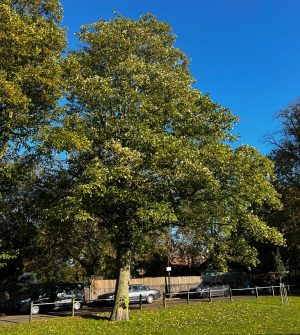
Acer pseudoplatanus is known as the sycamore in the U.K, or the sycamore maple in the United States. It was first described in botanical terms by the Swedish naturalist Carl von Linné in 1753. It is thought that the sycamore is an introduced species, as its native range is central Europe and Western Asia. It probably arrived in this country in the Tudor period (circa 1500 CE). That it has no old native names is perhaps indicative of its absence before Tudor times, (Some say it has been here longer and have suggested that it persisted in Scotland). It was recorded in the wild in Kent in 1632. The sycamore is probably best regarded as a neophyte. A neophyte is a plant that is not native to a particular area / region and has been introduced in recent history. Whatever its background, the sycamore is now to be found spread across the country.
Its spread is due in no small part to the capacity of a single tree to produce many hundreds, indeed thousands of seeds. The seeds are ‘winged’.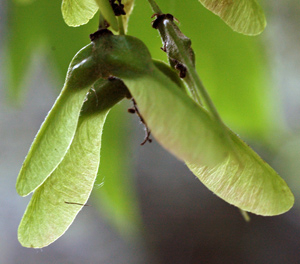 The wing of each seed develops from an extension of the ovary wall. Two seeds are joined together to form a structure termed a double samara - a 'helicopter-like' device. The wings catch the wind and the fruit rotates as it falls from the tree. This slows the descent and enables seed dispersal over a greater distance.
The wing of each seed develops from an extension of the ovary wall. Two seeds are joined together to form a structure termed a double samara - a 'helicopter-like' device. The wings catch the wind and the fruit rotates as it falls from the tree. This slows the descent and enables seed dispersal over a greater distance.
The sycamore has been deliberately introduced in a number of countries as it is tolerant of air pollution, salt spray and wind and it readily invades disturbed ground (abandoned farmland, brownfield sites, roadsides etc). It is now regarded as an invasive species in, for example, New Zealand.
The leaves of the sycamore are simple but large.  Each leaf has five distinct lobes and five veins radiate from the base of the leaf into the lobes. The edge of the leaf is somewhat ‘ragged’ with rounded 'teeth'. The lower surface may bear some hairs. The leaves are arranged in opposite pairs around the twigs / stem.
Each leaf has five distinct lobes and five veins radiate from the base of the leaf into the lobes. The edge of the leaf is somewhat ‘ragged’ with rounded 'teeth'. The lower surface may bear some hairs. The leaves are arranged in opposite pairs around the twigs / stem.
In Autumn, heavy leaf fall can mean that the ground under a sycamore tree can be smothered with a significant layer of the leaves, consequently the diversity of the ground flora underneath the tree may suffer. In spring and summer, the leaves can support large populations of aphids. Evidence of aphids on the leaves may be seen in the form of honeydew; this is the sugary waste of their feeding. 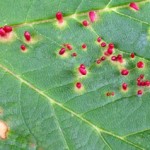 It may fall onto lower leaves (and cars); it provides food for flies and other insects. The aphids themselves are a food source for ladybirds. Sometimes the leaves are covered with small, red 'blobs' / projections - these are galls caused by a mite (a small spider-like creature). The female mite lays eggs in these structures.
It may fall onto lower leaves (and cars); it provides food for flies and other insects. The aphids themselves are a food source for ladybirds. Sometimes the leaves are covered with small, red 'blobs' / projections - these are galls caused by a mite (a small spider-like creature). The female mite lays eggs in these structures.
Sycamores can be coppiced, that is, cut down to a stump which will rapidly produce new growth - for poles etc. The timber of the sycamore is close grained, white to cream in colour that turns ‘golden’ with age. It can be used in making musical instruments (violins), furniture, wood flooring
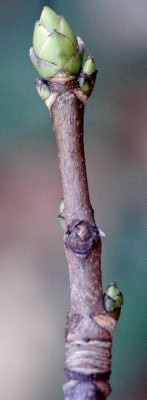 There are many other species in the genus Acer, for example, Acer platanoides - the Norway Maple, Acer campestre - the Field Maple, Acer palmatum - Japanese Maple, and Acer saccharum - the Sugar Maple. All of these have a (diploid) chromosome number of 26. Interestingly, the sycamore has a chromosome number of 52 - the number of chromosomes per cell has doubled. The sycamore is a polyploid.
There are many other species in the genus Acer, for example, Acer platanoides - the Norway Maple, Acer campestre - the Field Maple, Acer palmatum - Japanese Maple, and Acer saccharum - the Sugar Maple. All of these have a (diploid) chromosome number of 26. Interestingly, the sycamore has a chromosome number of 52 - the number of chromosomes per cell has doubled. The sycamore is a polyploid.
A couple of interesting historical points about sycamore ;
- The Tolpuddle Martyrs' Tree is a very old sycamore. The tree was used as a meeting point (in 1833) for six local agricultural labourers to discuss low wages and their poor living / working conditions. They are associated with the birth of the trade unionist movement. The 'Tolpuddle Martyrs' (as they came to be known) were sentenced to seven years of penal labour in Australia and were transported to Botany Bay.
- Dule trees were used as gallows for public hangings and also used as gibbets for the display of the corpse after such hangings. One such dule tree lies within the grounds of Leith Hall, near Huntly, Aberdeenshire. This tree is a sycamore. The strong timber of sycamore made it a favoured tree for this purpose.
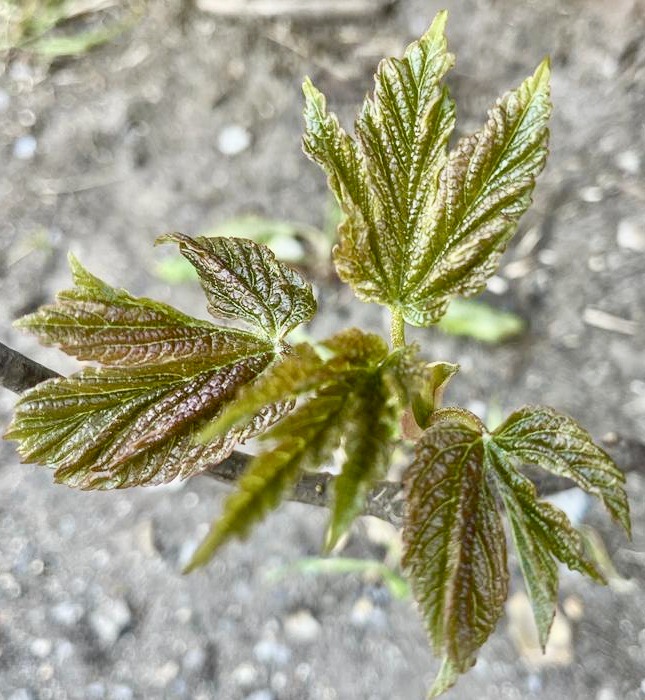
emerging leaves
Comments are closed for this post.
